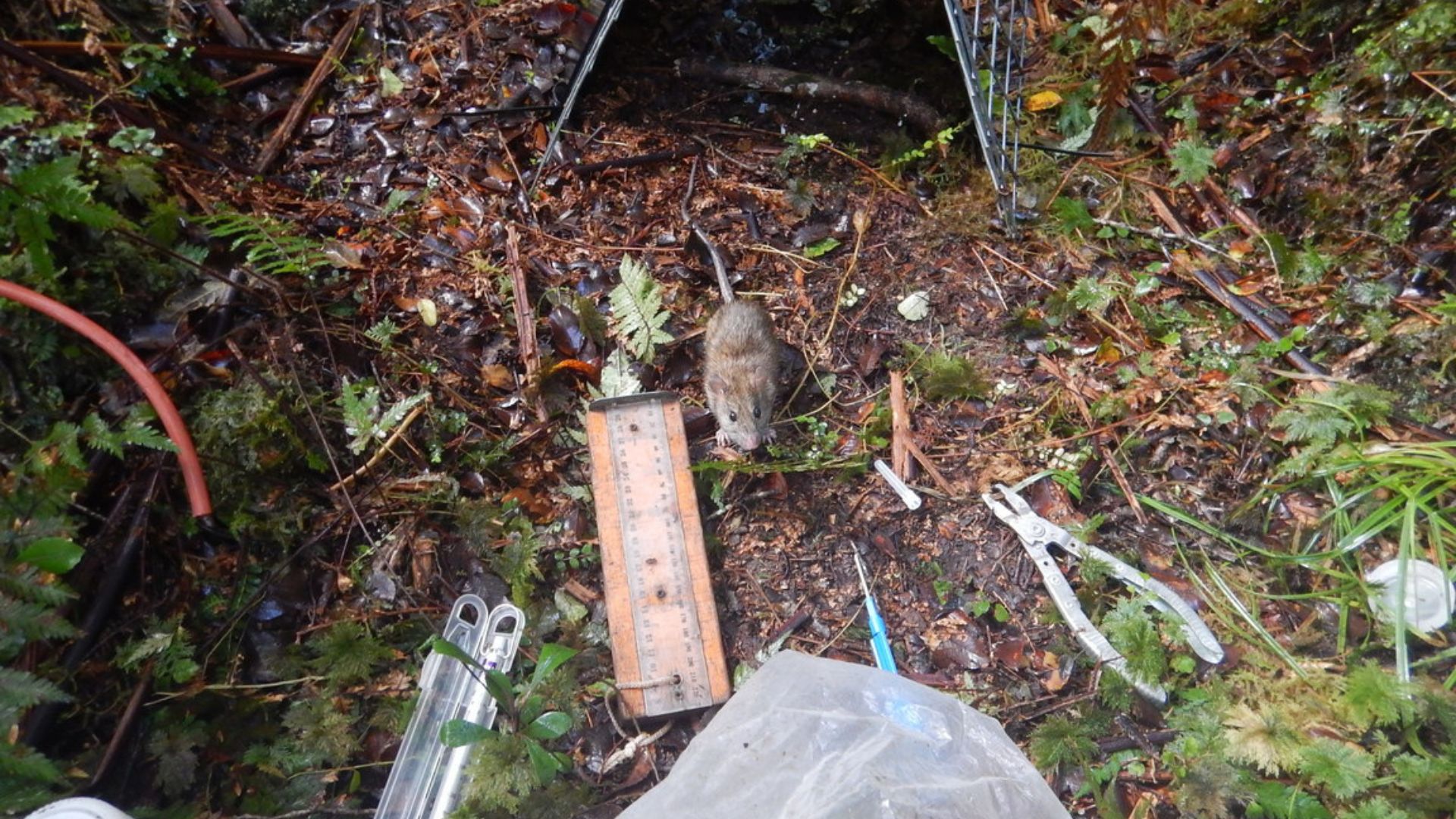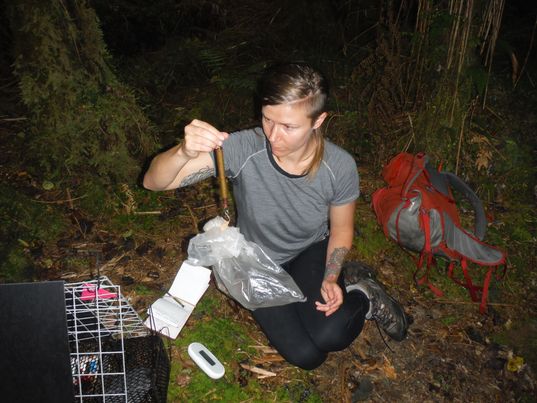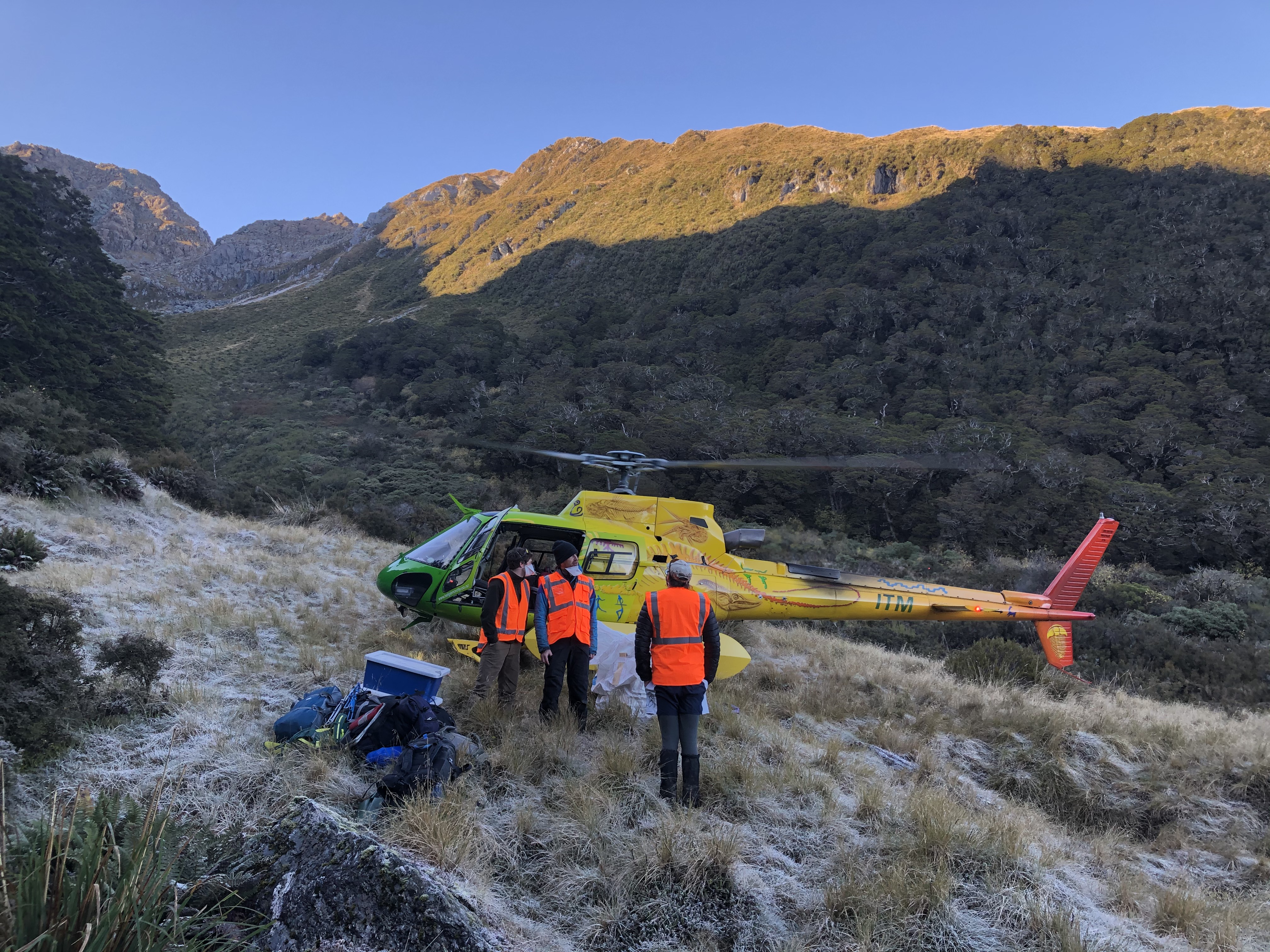If we can understand how invasive species use different habitats, we can better predict how their populations might change due to climate change. In a published paper in Biological Invasions, Joanna Carpenter and colleagues looked at how food availability and temperature affected the distribution and density of ship rats in Aotearoa New Zealand forests.

Spoiler alert: Jo found that a lack of food plays a major role in keeping rats away from cooler, high-elevation environments. But why, and why does it matter?
Ravenous rattus rattus
We know that rats are most abundant at mid-to-low elevations, while rat populations are barely detected at higher elevations.
Ship rats originate from southern India, where the climate is significantly warmer than high altitudes in mountainous Fiordland, for example. Cold forests also usually have beech trees that don’t seed yearly, so there’s less food.
The Manaaki Whenua researcher and her team wanted to find out which of these two factors was the likely cause of rats sticking to lower elevations.
“We measured rats through a massive mast event, where all the beech trees seed at the same time and flood the landscape with a huge amount of food,” Joanna says.
“We also provided the rats with extra food for six months to see if we could sustain their densities through winter.”
The team radio-tracked rats via helicopter and live-trapped rats to understand their density and survival during the experiment.
“Supplementary feeding at high elevation increased survival, recruitment and density of rats through winter,” the paper reports.

However, those rats at higher elevations declined to zero by spring, likely due to the mast event and supplementary feeding ending. Stoat predation was also a probable driver of the decline, with these predators making the most of the rodent plague during the mast event.

For now, cooler habitats can be a refuge for some rat-sensitive native species. Already, monitoring in the Hollyford Valley has shown pīpipi (brown creeper), titipounamu (rifleman), kākā, and yellow-crowned kākāriki are more common at high elevations compared to lower elevations. This could be because of persistent rat numbers on the valley floor.
When there are more rats in higher elevations, it can cause significant harm to birds in those areas. The orange-fronted kākāriki is a bird that is particularly vulnerable to rat predation when rat tracking rates (the proportion of inked cards tracked by a rat along a 450 m transect) exceed 5%. In the high-elevation areas studied, rat tracking rates were between 55% and 100% during the mast year. Yikes.
But, the good news: as the ambient temperature is not the primary factor limiting rats from invading colder forests, climate change and a warming environment is unlikely to drive rats into high elevations immediately.
Could this change?
That good news from above comes with a catch.
Over the longer term, as our forests warm with climate change, the ecosystem will see more insects and a more diverse range of plants and trees able to grow in cooler forests, including small fruiting shrubs, providing a more consistent food source for rats.

